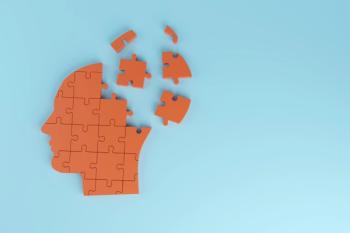
Why Thomas Szasz Did Not Write The Myth of Migraine
How is “disease” defined? A popular criticism of psychiatry gets debunked.
COMMENTARY
The next time one of psychiatry’s detractors tells you that psychiatrists do not treat real diseases because we have not identified the precise pathophysiology of schizophrenia, bipolar disorder, or other psychiatric illnesses, try this: Ask the skeptic to explain the precise pathophysiology of migraine or cluster headaches. Follow up by asking what laboratory test or neuroimaging study neurologists use to diagnose these devastating conditions. At that point, the critic should be either blushing or blanching.
For the coup de grace, ask them why the late Thomas Szasz, MD—who insisted that real diseases always entail the identification of specific morphological or physiological abnormalities—did not write a book titled The Myth of Migraine as a sequel to his famous (or infamous) 1961 work The Myth of Mental Illness. (Disclosure: Szasz was one of my teachers during residency and an intellectual
Of course, most Psychiatric TimesTM readers will know that the precise pathophysiology of migraine and cluster headaches is not known, despite notable advances in our understanding; and that there is no laboratory test or neuroimaging study that reliably or usefully identifies
Pain as Sharp as a TAC
Let us take note of the excellent piece by journalist and headache sufferer Tom Zeller Jr, who
To be sure, plausible theories abound, including, most recently, linking TACs to “dysfunction in the trigeminal and cranial autonomic systems and their connections, modulated by the hypothalamus.”4 Yet, as headache specialist Stephanie J. Nahas, MD, has acknowledged, “The pathophysiology of TACs is complex and incompletely understood.”4 And, as a rule, morphological and anatomical abnormalities in the brain are lacking in TACs; for example, investigation rarely yields abnormalities on magnetic resonance imaging or computed tomography imaging. (However, vascular loop compression and pituitary abnormalities are sometimes found in patients with short-lasting, unilateral neuralgiform headache attacks or SUNHA.4) Furthermore, to my knowledge, TACs are never noted on autopsy reports, contrary to Szasz’s erroneous claim that “Every ‘ordinary’ illness that persons have, cadavers also have.”6
TACs are Disease States
And yet, the term disease may reasonably be applied to the TACs, which Nahas has called, “a distinct set of headache diseases.”4 This is so, even though, as Zeller rightly noted, “any neurologist working today will readily admit that we remain the in the Stone Age with regard to many aspects of these most common disorders.”5
Similarly, the term disease may reasonably be applied to schizophrenia, bipolar disorder (BD), and other incapacitating psychiatric afflictions, even though the etiology and pathophysiology of these heterogeneous conditions are not yet well understood. There are, however,
Disease and Clinical Medicine
By and large, physicians are a practical lot, anxious about evaluating everybody sitting in their overcrowded waiting rooms. Most physicians do not scratch their heads, pondering the question, “Will my next patient have a disease, a disorder, a malady, an illness, a morbus, an affliction, or a syndrome?” The subtle differences among these terms are of far less clinical importance than the presence of substantial and/or enduring suffering and incapacity in the patient—arguably, the hallmarks of disease (dis-ease) as commonly understood throughout the
Cluster headaches and related diseases certainly fit the criteria of substantial and/or enduring suffering and incapacity; indeed, cluster headaches are ominously known as suicide headaches.4 It hardly needs mentioning that serious psychiatric disease states like schizophrenia, BD, and various psychoses also produce substantial and/or enduring suffering and incapacity—and all too often lead to
Citing the work of sociologist Joanna Kempner, PhD, Zeller noted that migraine headaches, in particular, “have been given inadequate consideration by the medical and scientific establishments,”5 which Kempner attributed partly to the disproportionate number of women afflicted by migraines. Ironically, Zeller noted, their physical pain “was often ascribed a psychological or emotional origin.”5
Like the TACs described by Zeller, psychiatric disease is too often dismissed or disparaged, and psychiatric patients are often
Despite Szasz’s widespread influence, his ideas have come in for heavy criticism. For instance, psychiatrist Tony Benning, MBChB, MSC, MRCPsych, FRCPC, PhD,
As Kendell pointed out in his rebuttal of Szasz’s claim that mental illnesses fail to conform to the definition of disease, Szasz’s notion of disease, influenced by [Rudolph] Virchow, was overly narrow, for it placed excessive importance on the criterion of ‘cellular pathology.’ Kendell also claimed that Szasz’s argument understated the extent to which ‘suffering and incapacity are fundamental attributes of disease’. He brought attention to the fact that in medicine generally there is no universally agreed upon definition of disease, and if Szasz’s criterion were to be widely adopted, several diseases widely recognized in medicine, such as migraine and torticollis (neither of which [is] associated with lesions or cellular pathology) would fail to qualify.
Concluding Thoughts
The term disease is defined in many different ways, depending on the needs, training, and expertise of the observer. For the pathologist, the term generally means something quite different than what it represents for the primary care physician, the epidemiologist, or the forensic psychiatrist. Yet one thing is clear: Physicians in general view disease in pragmatic and humanistic terms, applying the term to a very broad spectrum of human suffering and incapacity. One remarkably sweeping definition was provided in no less a source than the 8th edition of Harrison’s Principles of Internal Medicine15 (italics added for emphasis): “The clinical method has as its object the collection of accurate data concerning all the diseases to which human beings are subject; namely, all conditions that limit life in its powers, enjoyment, and duration.”
Just as we recognize trigeminal autonomic cephalalgias as instantiations of disease, so too must we recognize the most serious psychiatric conditions as disease states. And just as patients with TACs must be taken seriously, so too must those afflicted by psychiatric disease.
Dr Pies is professor emeritus of psychiatry and lecturer on bioethics and humanities, SUNY Upstate Medical University; clinical professor of psychiatry, Tufts University School of Medicine; and Editor in Chief emeritus of Psychiatric TimesTM(2007-2010). He is the author of
References
1. Pies R. On myths and countermyths: more on Szaszian fallacies. Arch Gen Psychiatry. 1979;36(2):139-144.
2. Pies R. Thomas Szasz and the language of mental illness. In: Haldipur CV, Knoll JL, and Luft E vD, eds. Thomas Szasz: An Appraisal of His Legacy. Oxford University Press; 2019: 155-168.
3. Wei DY, Yuan Ong JJ, Goadsby PJ. Cluster headache: epidemiology, pathophysiology, clinical features, and diagnosis. Ann Indian Acad Neurol. 2018;21(Suppl 1):S3-S8.
4. Nahas SJ. Cluster headache and other trigeminal autonomic cephalalgias. Continuum (Minneap Minn). 2021;27(3):633-651.
5. Zeller T. There has never been a better time to have a headache. New York Times. July 23, 2021. Accessed July 28, 2021.
6. Szasz T. The Second Sin. Anchor Books; 1973.
7. Clay HB, Sillivan S, Konradi C. Mitochondrial dysfunction and pathology in bipolar disorder and schizophrenia. Int J Dev Neurosci. 2011;29(3):311-324.
8.Nakahara S, Matsumoto M, van Erp TGM. Hippocampal subregion abnormalities in schizophrenia: A systematic review of structural and physiological imaging studies. Neuropsychopharmacol Rep. 2018;38(4):156-166.
9. Kendell RE. The concept of disease and its implications for psychiatry. Br J Psychiatry. 1975;127:305-315.
10. Kendell RE. The myth of mental illness. In: Schaler JA, ed. Szasz Under Fire: The Psychiatric Abolitionist Faces his Critics. Open Court; 2004:29-55.
11. Baldessarini RJ. Epidemiology of suicide: recent developments. Epidemiol Psychiatr Sci. 2019;29:e71.
12. Thornicroft G, Rose D, Kassam A. Discrimination in health care against people with mental illness. Int Rev Psychiatry. 2007;19(2):113-122.
13. Szasz TS. The Meaning of Mind: Language, Morality and Neuroscience. Praeger; 1996.
14. Benning TB. No such thing as mental illness? Critical reflections on the major ideas and legacy of Thomas Szasz. BJPsych Bull. 2016;40(6):292-295.
15. Isselbacher K. Introduction to Harrison’s Principles of Internal Medicine, 8th ed. G.W. Thorn et al, eds. McGraw-Hill; 1977.
Suggested Further Reading:
Ruffalo M, Pies RW.
Newsletter
Receive trusted psychiatric news, expert analysis, and clinical insights — subscribe today to support your practice and your patients.














